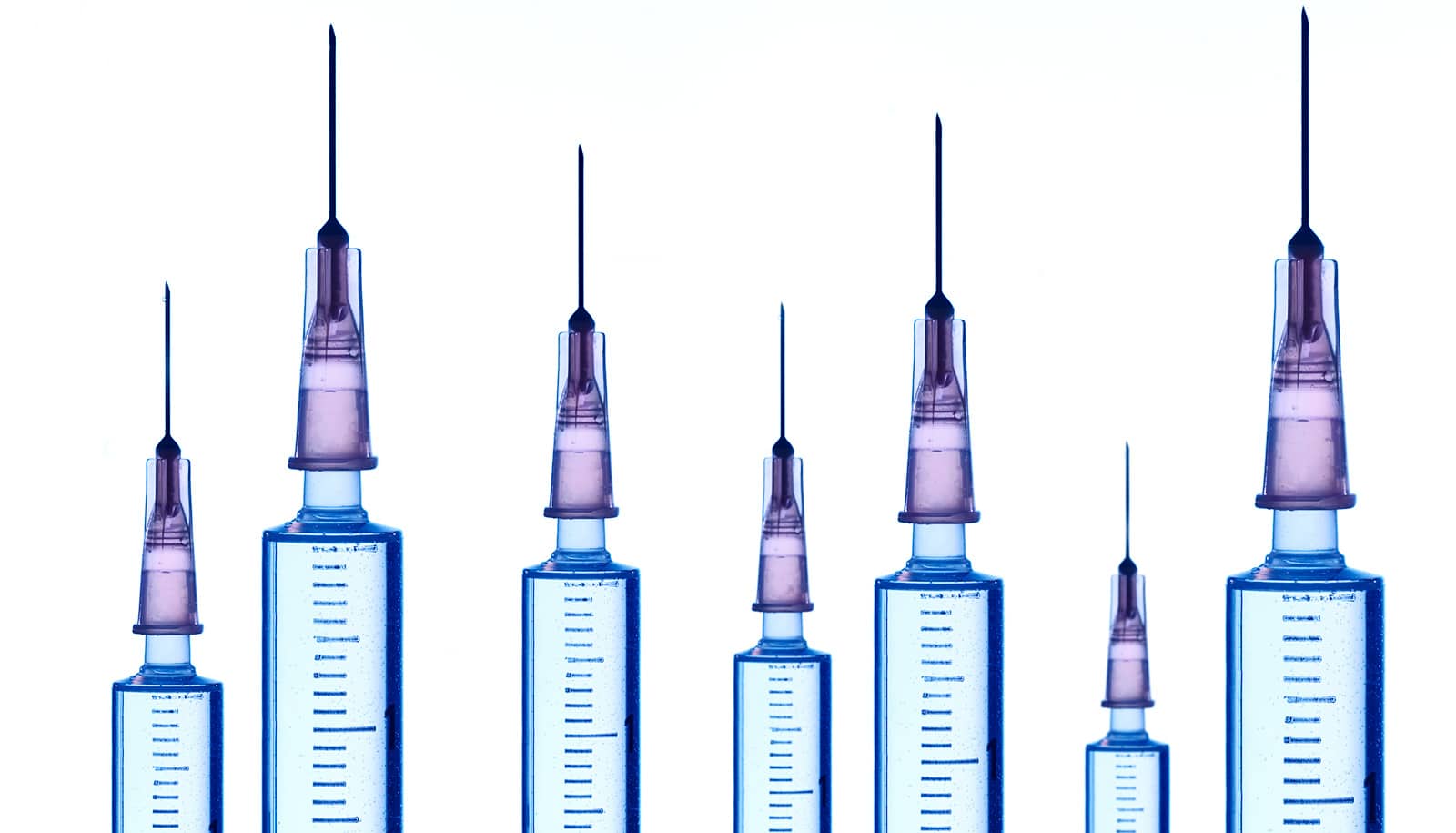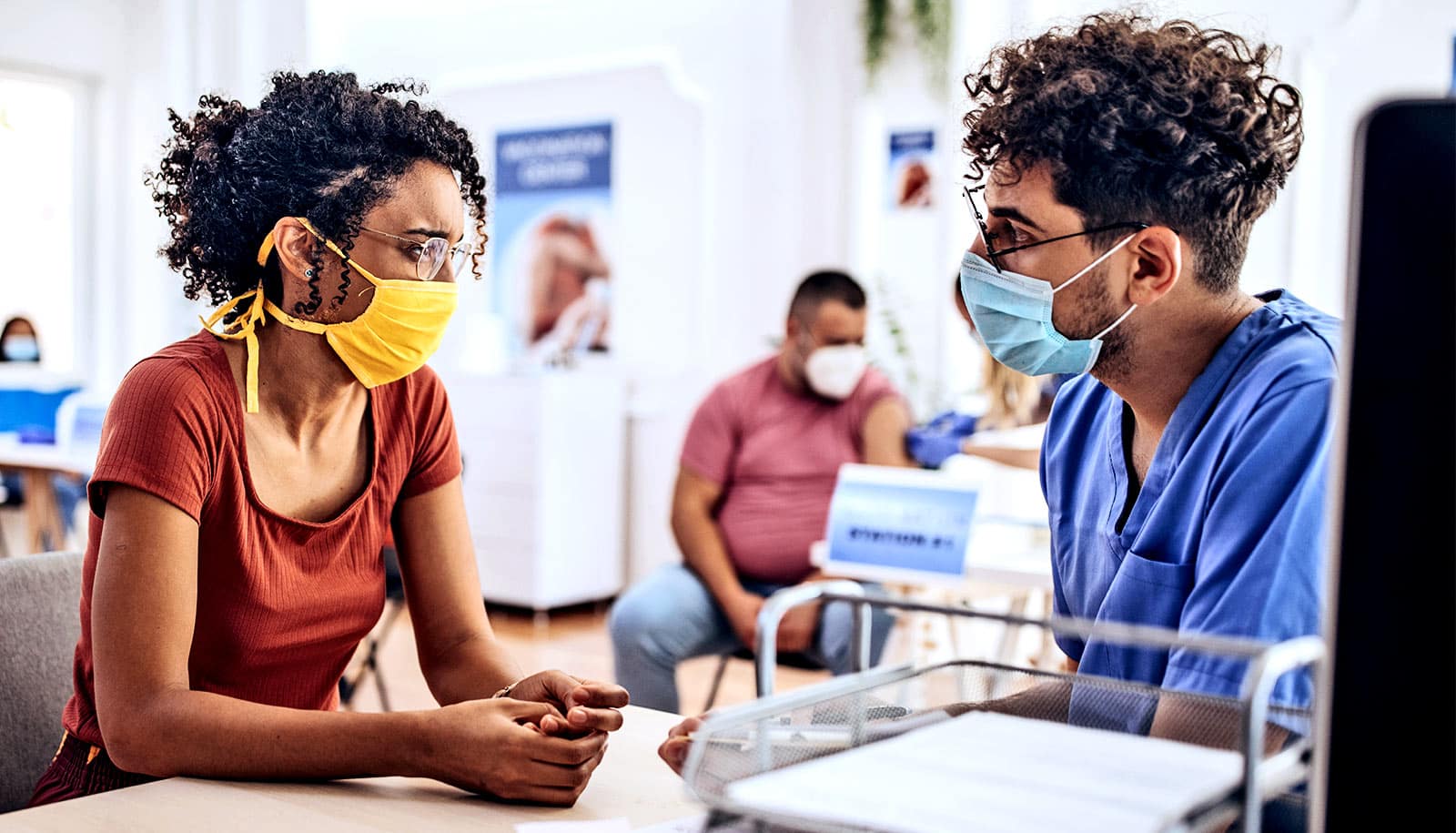Americans are more willing to get the COVID-19 vaccine if they are allowed to make a choice between multiple vaccine brands rather than being assigned to one, according to two new studies conducted during the pandemic.
As vaccination rates for preventable, infectious diseases like measles decline in the United States, the findings could help improve public health policy and the way that vaccines are presented.
What psychologists call the “pleasure of choice” may be a simple, though partial, solution to increasing vaccine uptake for many different diseases, says Ellen Peters, director of the Center for Science Communication Research in the University of Oregon’s School of Journalism and Communication.
When multiple options exist, people feel empowered if they’re given a choice and, as a result, like the option they chose more than if they didn’t have the chance to make the decision themselves.
“That’s the scenario we faced with COVID-19 vaccines,” says Peters, also a professor in psychology. “Whether it’s choosing Coke over Pepsi or one outfit over another, there’s a pleasure from choosing that causes people to feel more positive about what they get.”
Peters and her colleagues conducted two separate online surveys in December 2020 and June 2021 to study Americans’ real-time perceptions of the COVID-19 vaccines during their authorization and roll-out.
Their findings are published in the Journal of Applied Research in Memory and Cognition.
Unlike with the common flu shot, Americans had the unusual opportunity to decide between different vaccines for COVID-19, says Brittany Shoots-Reinhard, a senior research associate at the Center for Science Communication Research and research assistant professor of psychology at Ohio State University.
Multiple pharmaceutical companies were racing to rapidly develop a vaccine, which left room for extensive discussion on the relative merits of the various brands, she says.
To confirm if people were more likely to consider vaccination if given a choice among multiple vaccines, the researchers first surveyed Americans in early December 2020, when the Pfizer COVID-19 vaccine was given emergency-use authorization, with Moderna close behind. They presented all participants with information on both vaccines, including their risks and effectiveness, but half had the option to choose their preferred vaccine while the other half was assigned one.
Of those given a choice, 44% of participants reported being likely or certain to get vaccinated compared to 23% of those told which one they would get.
The pleasure of choice also seems to encourage vaccination among unvaccinated people. The researchers conducted a similar survey in June 2021, after the Johnson & Johnson vaccine was also authorized, to assess vaccine and booster shot perceptions between unvaccinated and vaccinated individuals.
Having a choice among Pfizer, Moderna, and Johnson & Johnson vaccines increased vaccine and booster intentions in both groups.
“The pleasure of choice is often discussed with consumer products, but it’s not really something we think about with health care decision-making,” Shoots-Reinhard says. “There hasn’t been a lot of research where you get to choose a vaccine and, in this case, simply being offered one of the better vaccines didn’t increase vaccine willingness. It really was offering options and allowing choice that gave vaccination intentions a boost.”
The pleasure of choice, however, is not a magic bullet to improving vaccine uptake, the researchers warn.
“Highlighting the pleasure of choice is only a partial solution,” Peters says. “It’s not going to be the only thing needed to convince people to get vaccines. But it did work across our studies with vaccinated and unvaccinated populations. So, when multiple kinds of vaccines exist, providing a choice may make a difference.”
Moreover, while choice makes people feel only more positive toward their chosen option, they also feel more negative toward the rejected options. If those options remain viable, however, that should be noted in public health messaging, the researchers say.
“Anytime people are offering choices, it should be emphasized that those rejected options may nonetheless be good options for you later,” Peters says. “The pleasure of choice is all yours, but keep in mind these vaccine options will be around for a while and you may prefer a different option down the line.
“For example, although the single-dose Johnson & Johnson vaccine was less effective than Pfizer and Moderna, it might have been good for someone who didn’t have the time to go back for multiple doses later.”
To see how vaccine education can be further improved to reduce hesitancy, Peters and Shoots-Reinhard also looked at how to best present vaccine safety and side effects in a 2022 paper. They noticed that current vaccine messaging informs people of the potential side effects but often leaves out how likely they are to occur.
When presenting online survey participants with the numerical likelihoods of experiencing side effects from hypothetical vaccines, 70% of those who got the numbers reported being likely to vaccinate compared to only 54% who didn’t get that information.
Although the COVID-19 landscape has greatly changed since 2020 and 2021, and therefore this research cannot be exactly replicated today, the pandemic presented a rare opportunity to study a highly evolving, global health emergency that affected and continues to affect so many people.
Vaccines are an important public health tool that go beyond the coronavirus, and the findings are a silver lining in how vaccine efforts in the US can be improved for future epidemics, the researchers say.
“It’s about giving people more and better information and allowing them more control over their lives,” Peters says. “We want people to get the information they’re missing and be able to make their own informed decisions.”
The National Science Foundation funded the work.
Source: Leila Okahata for University of Oregon



